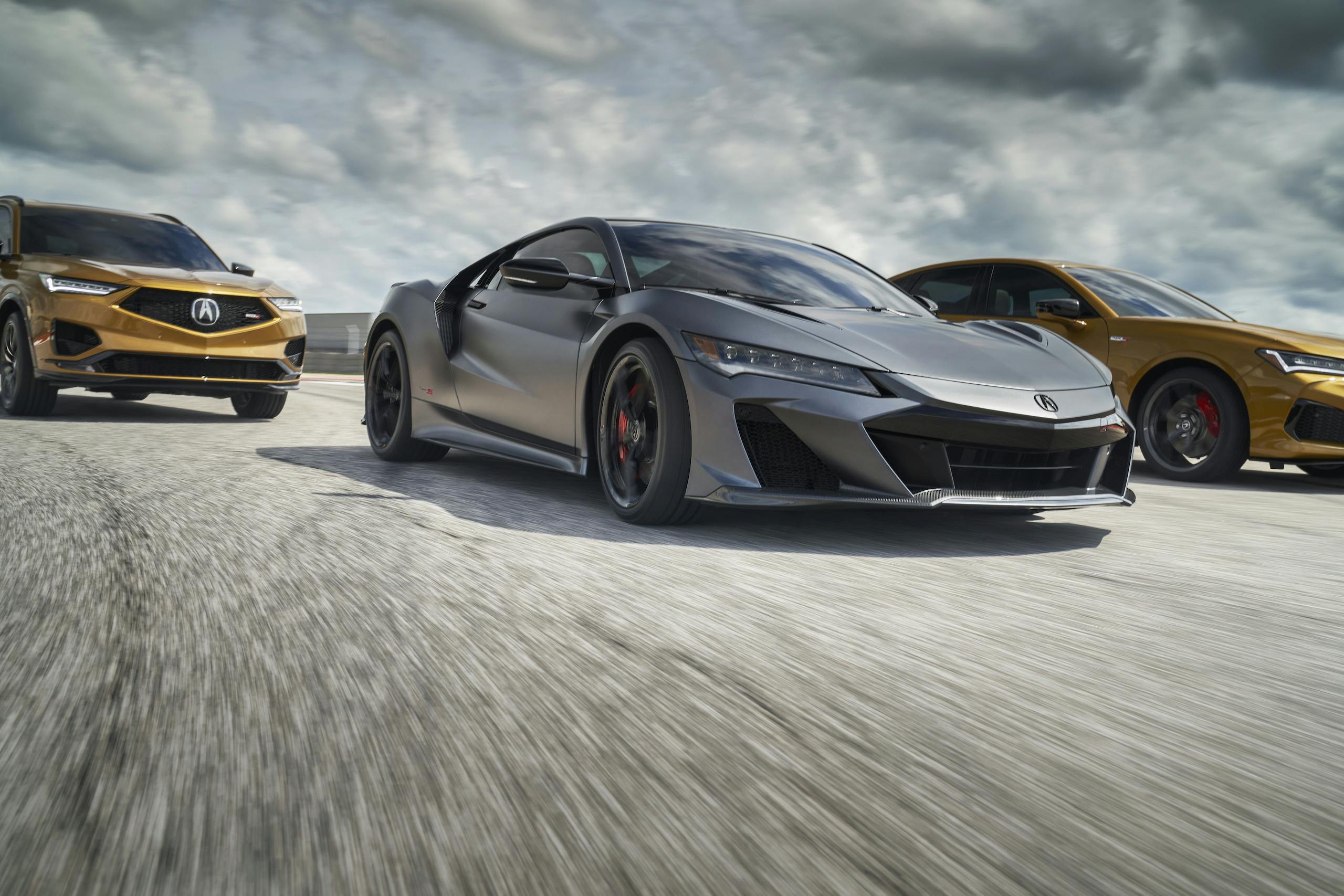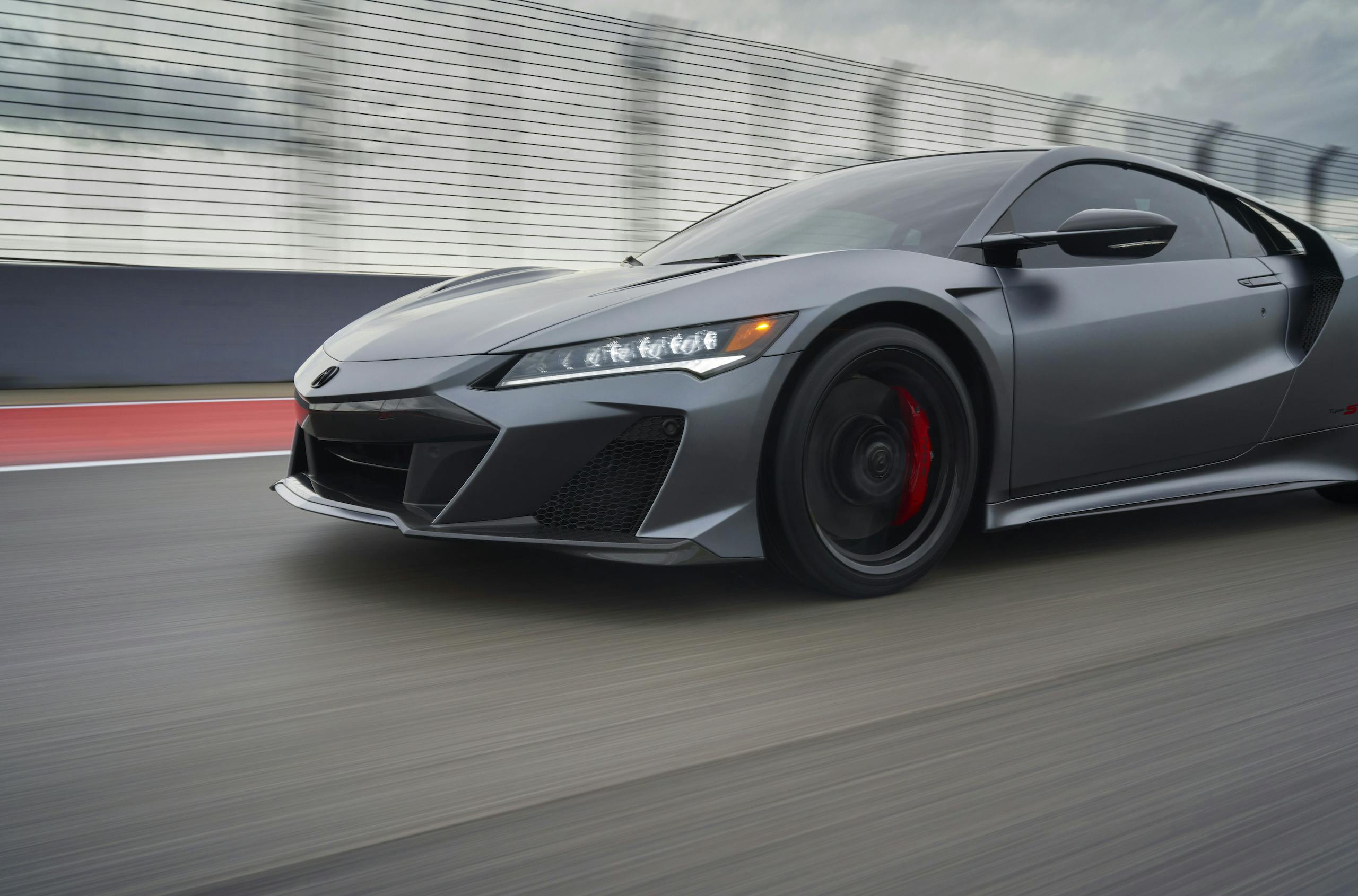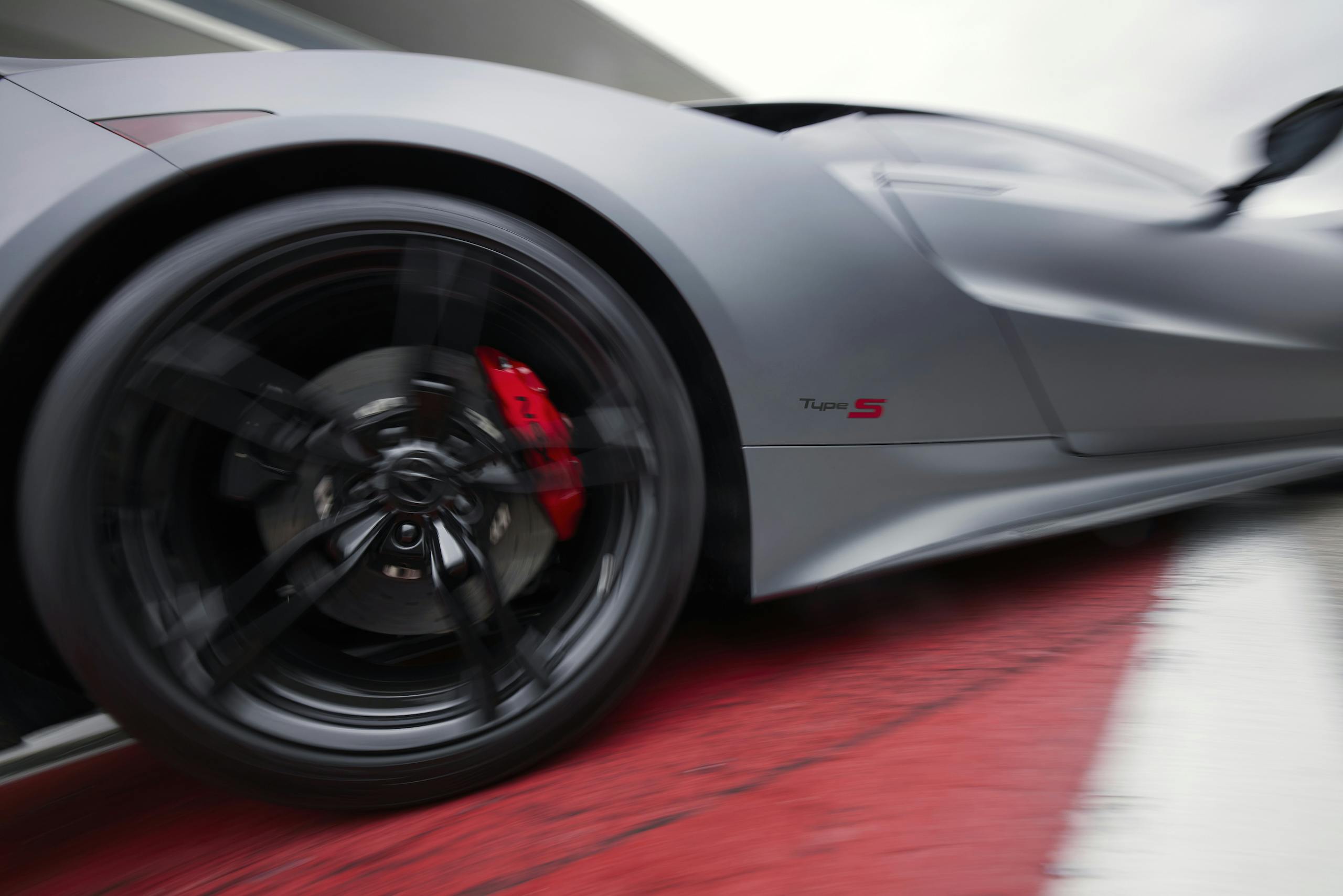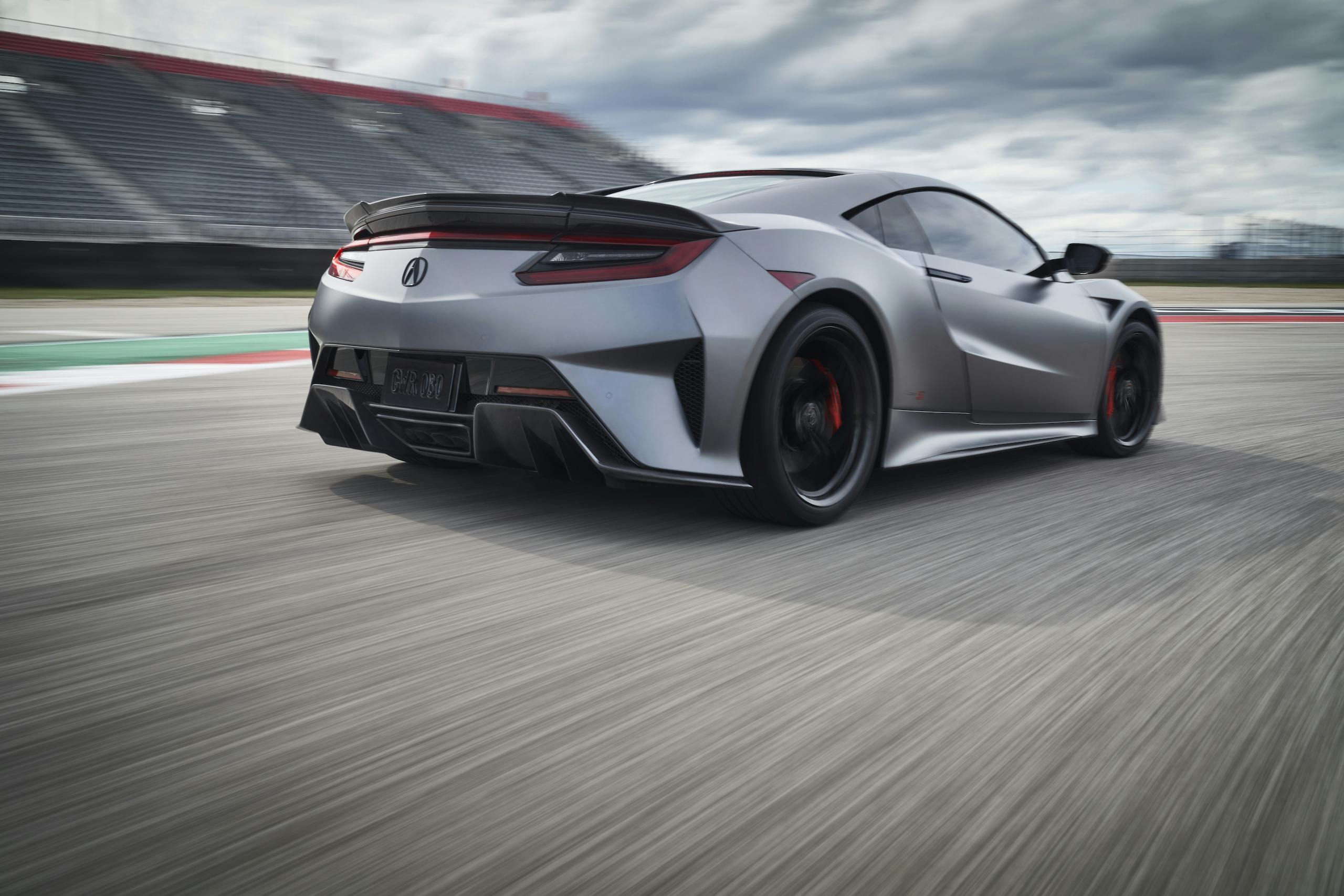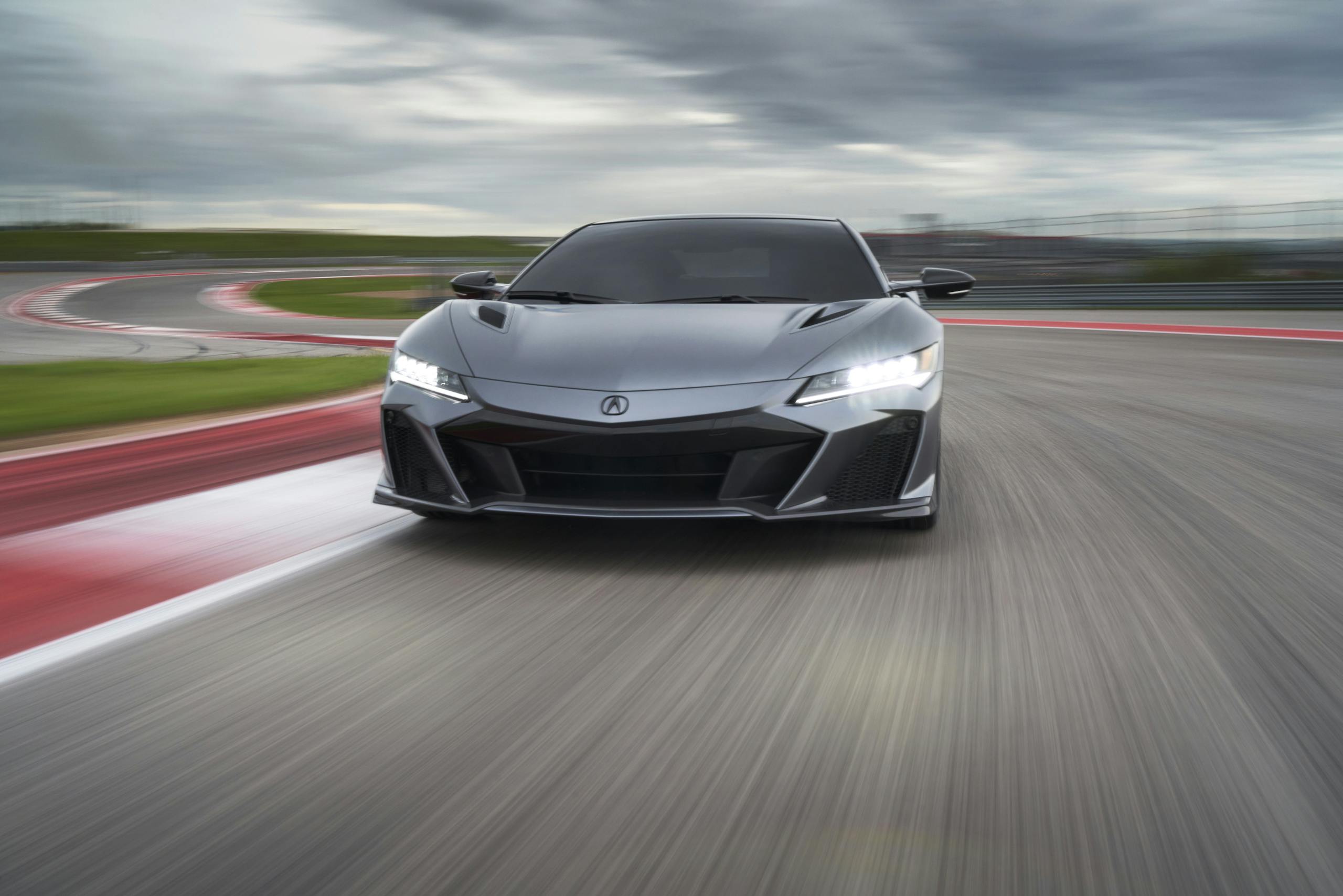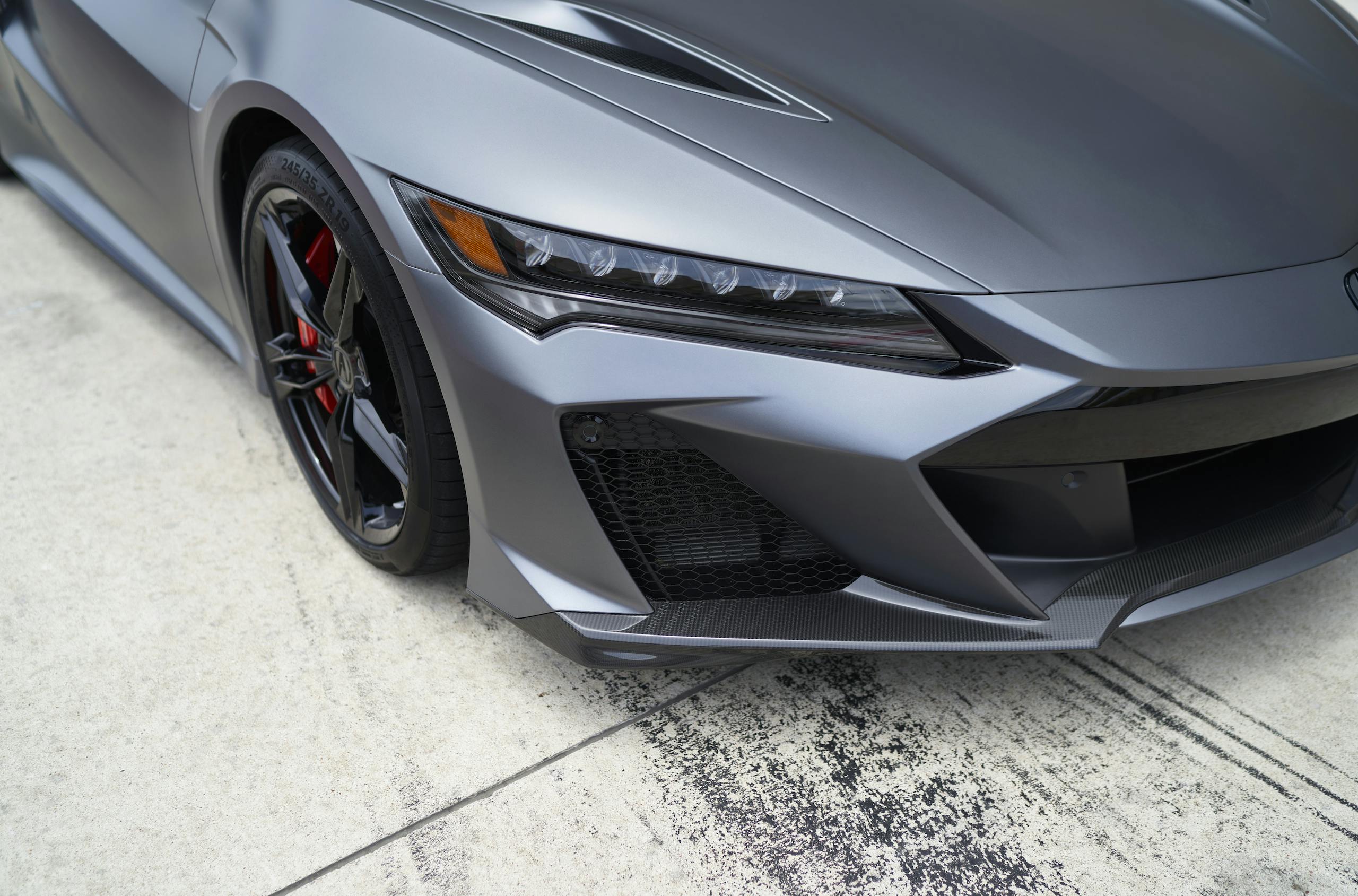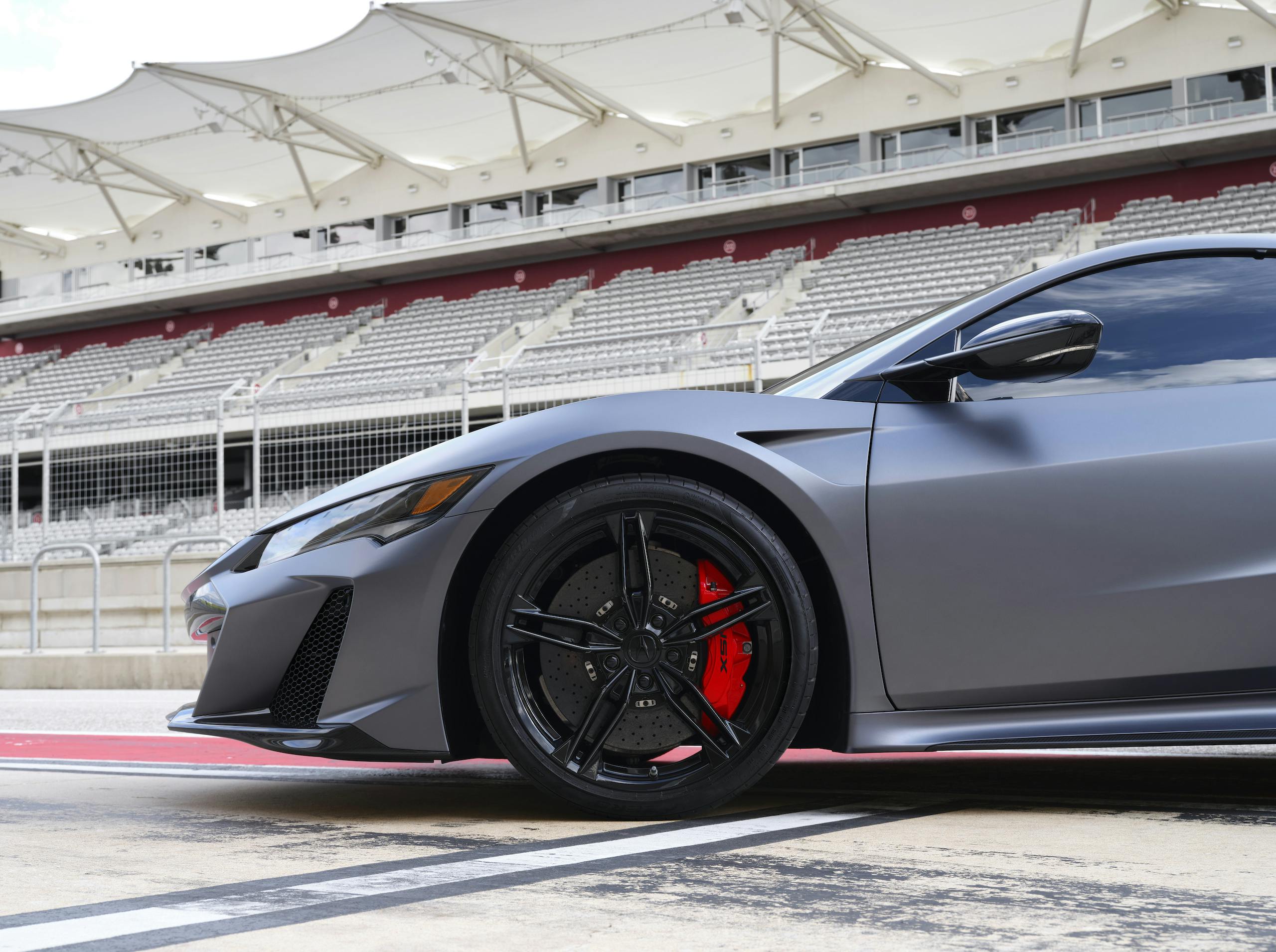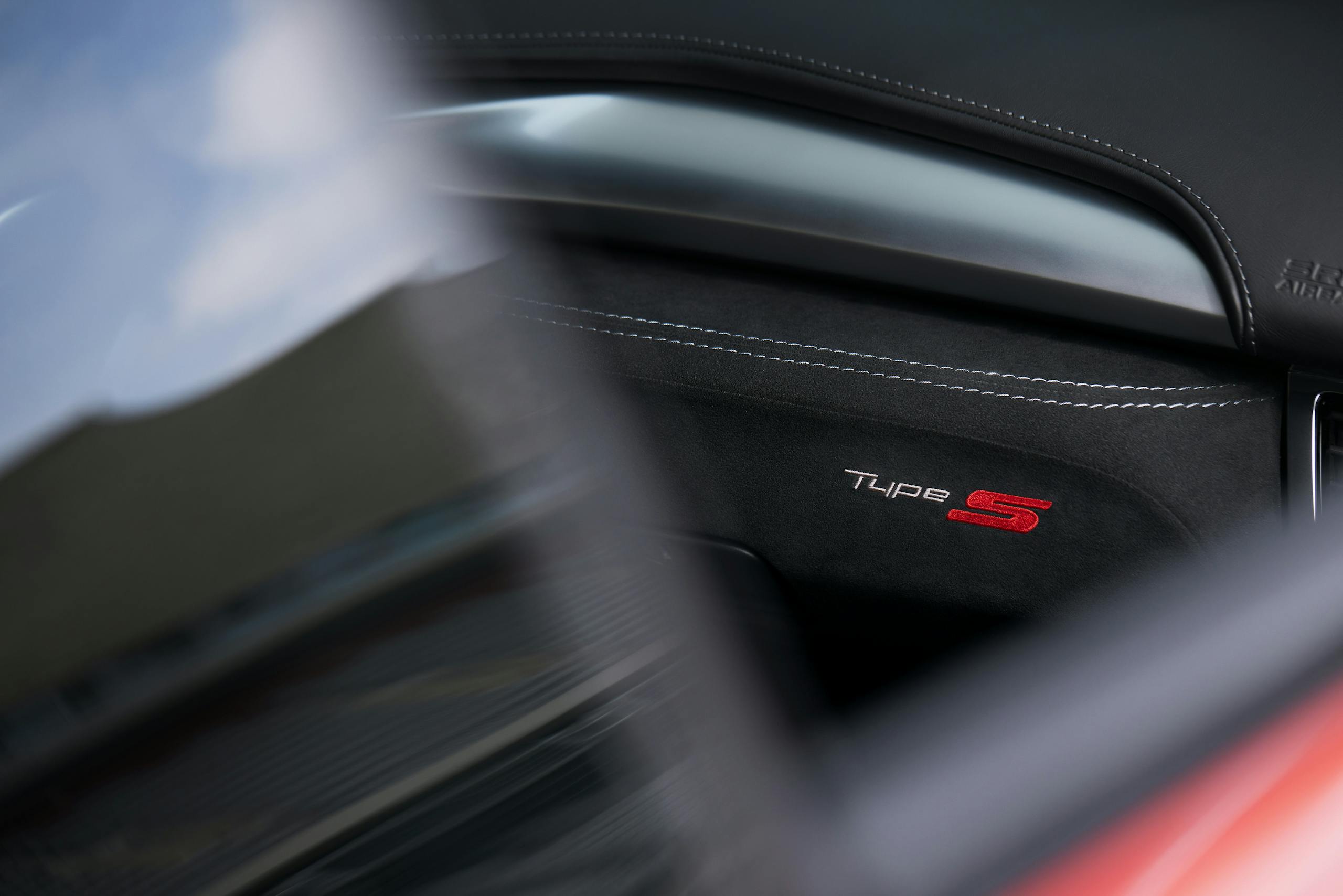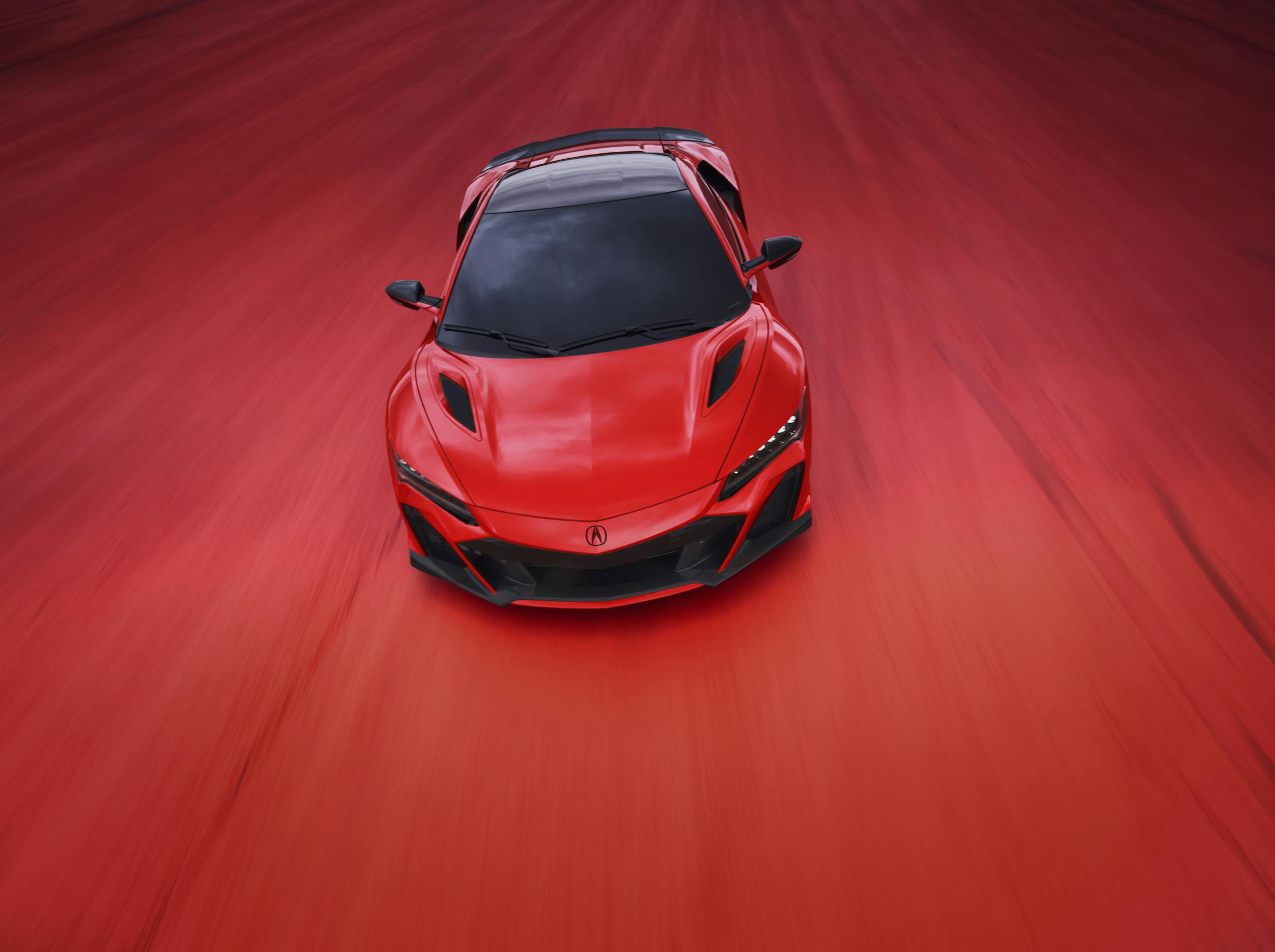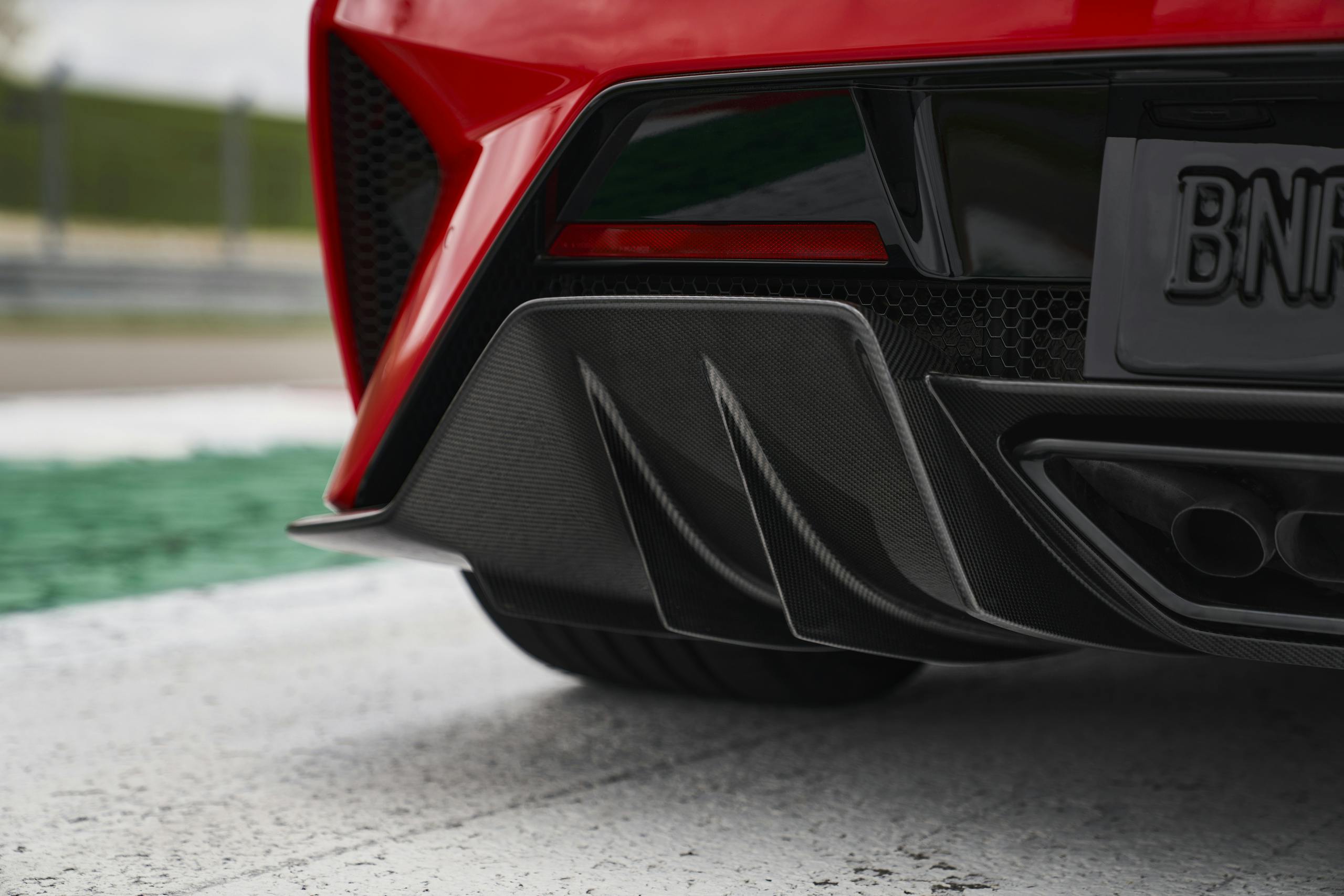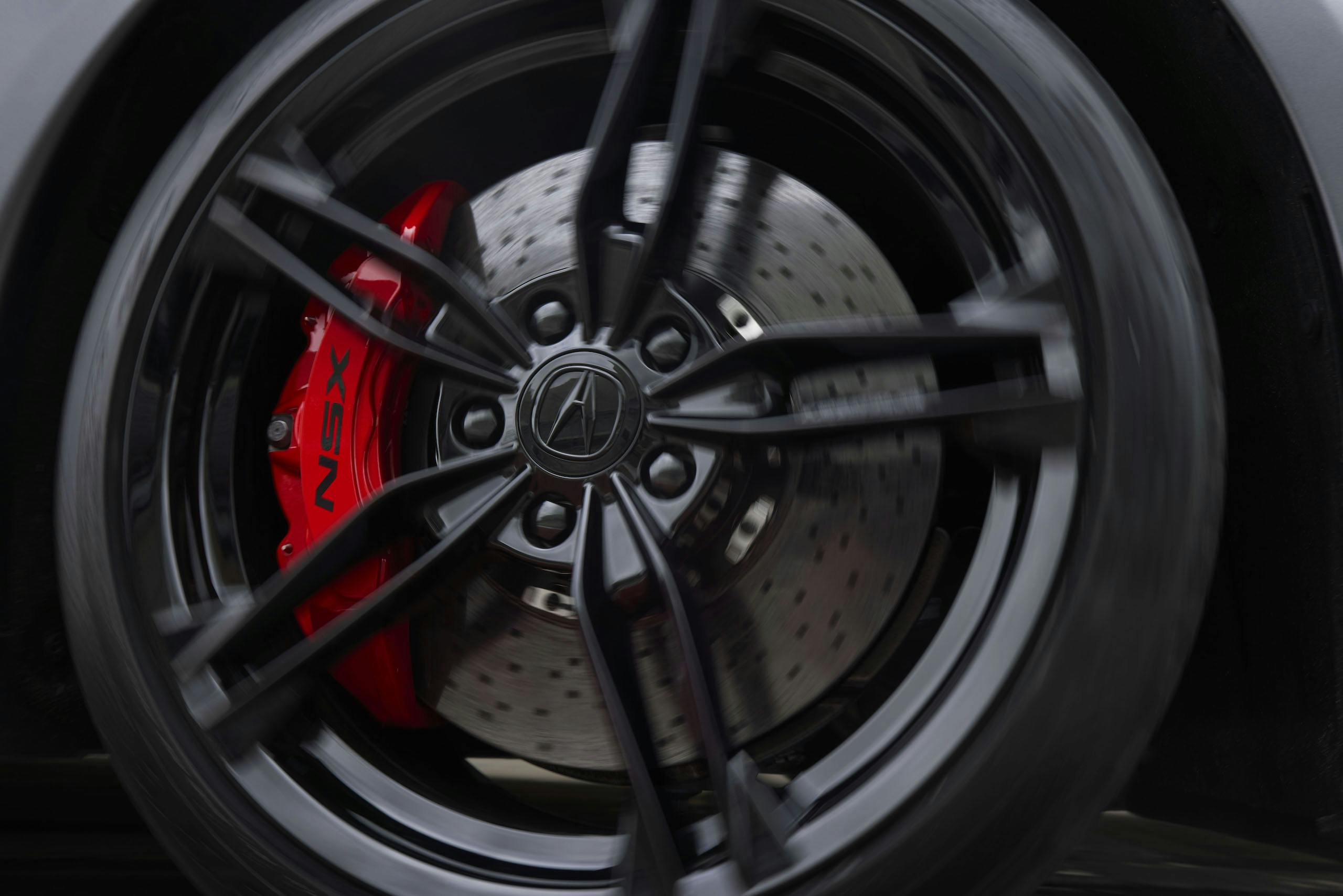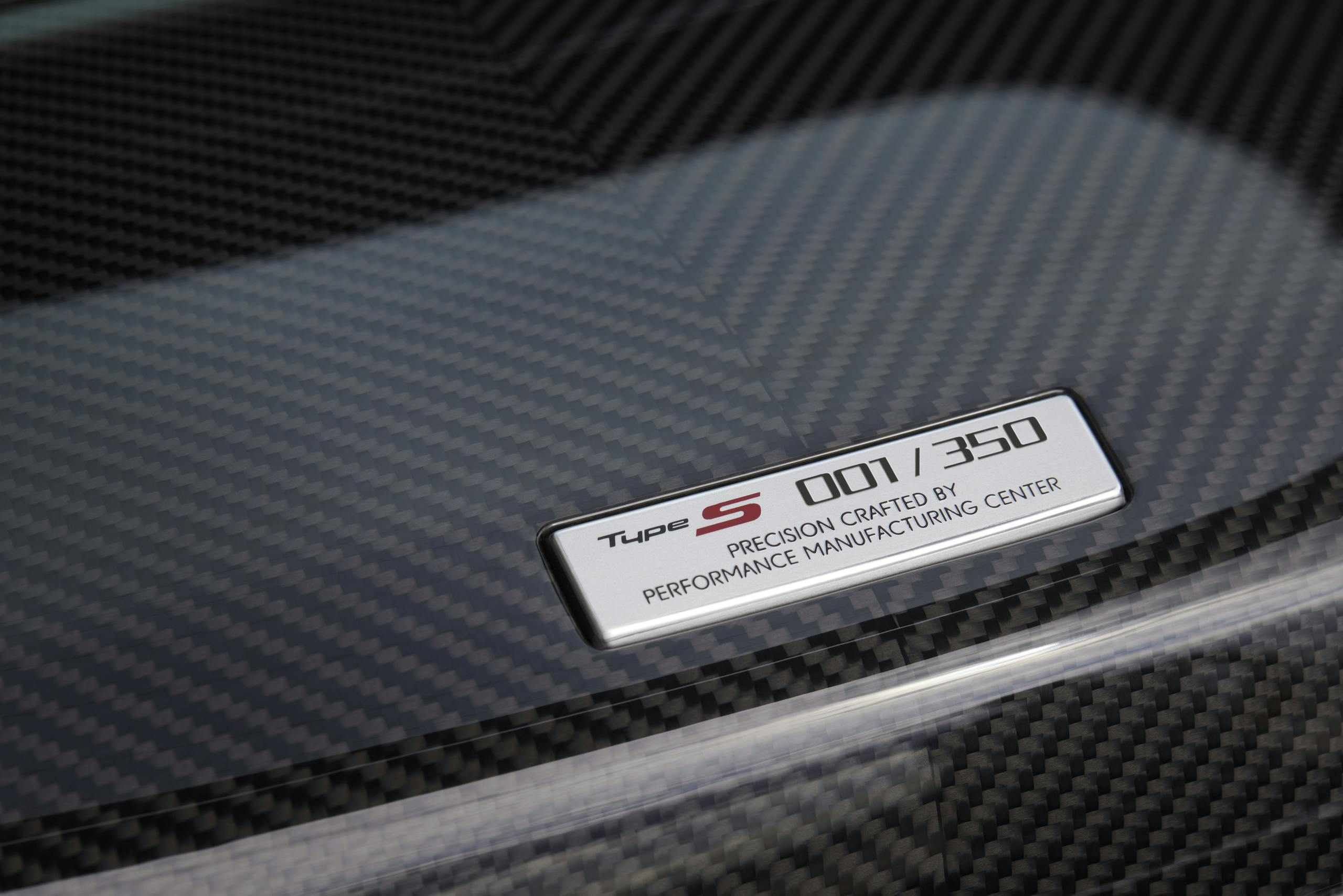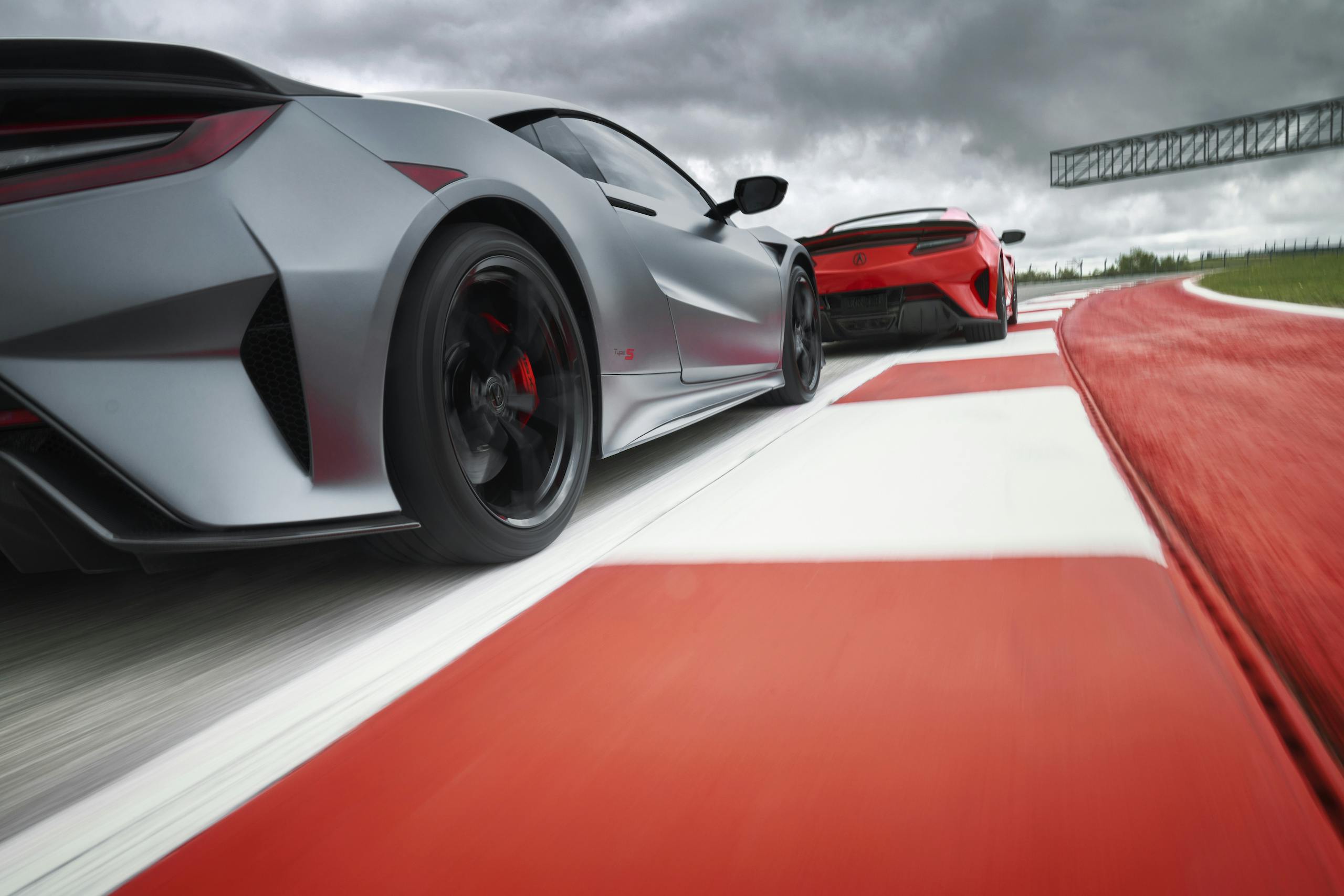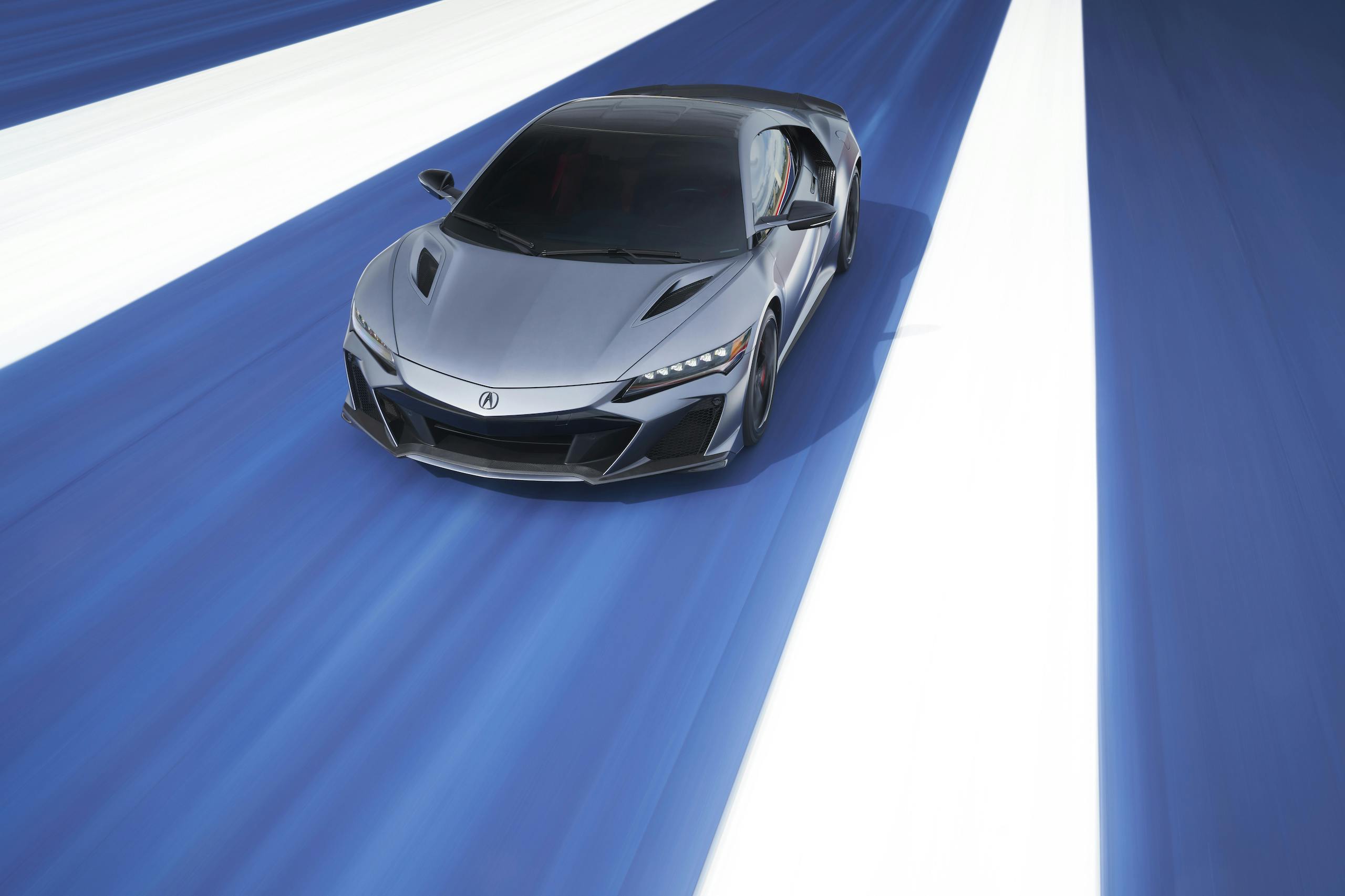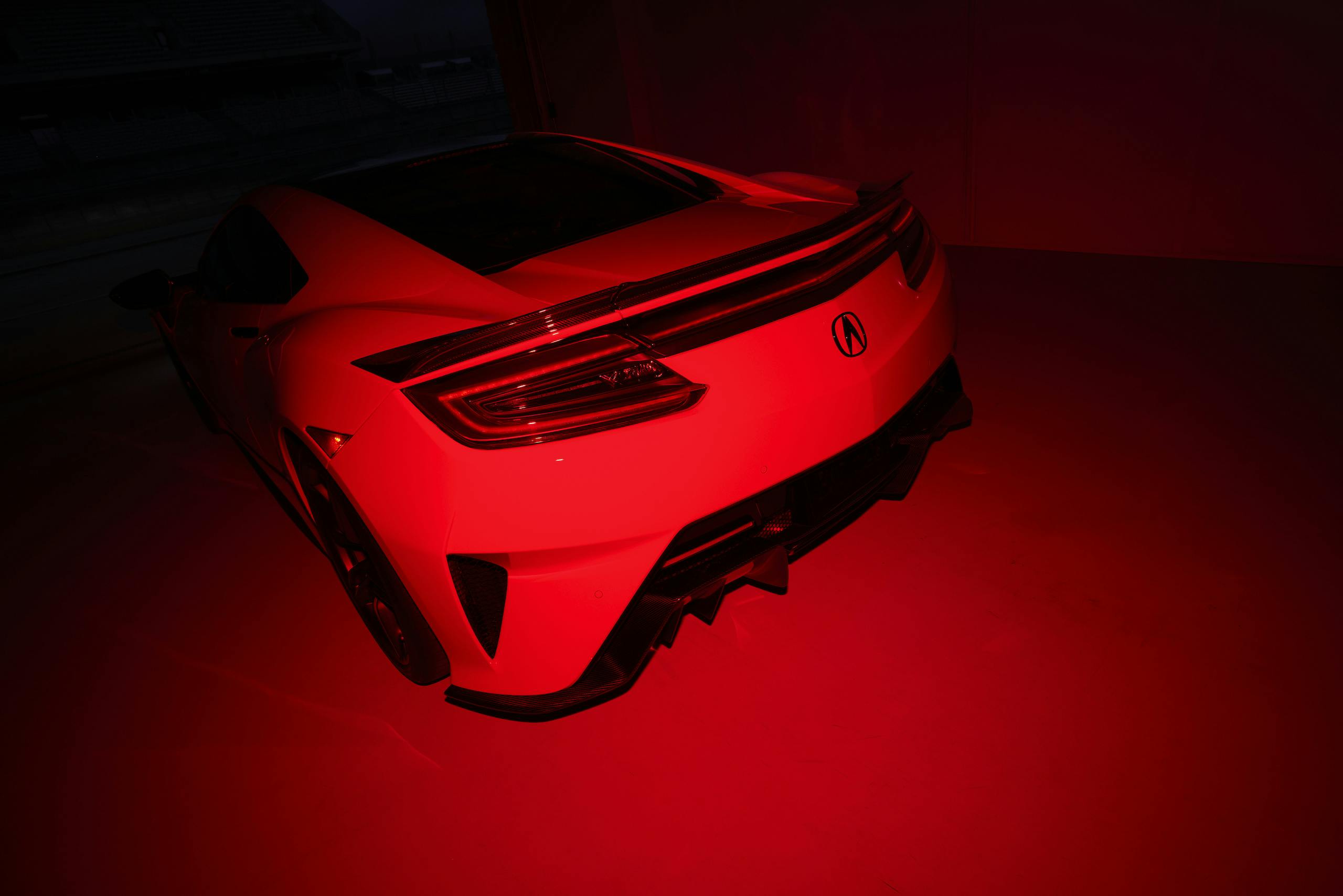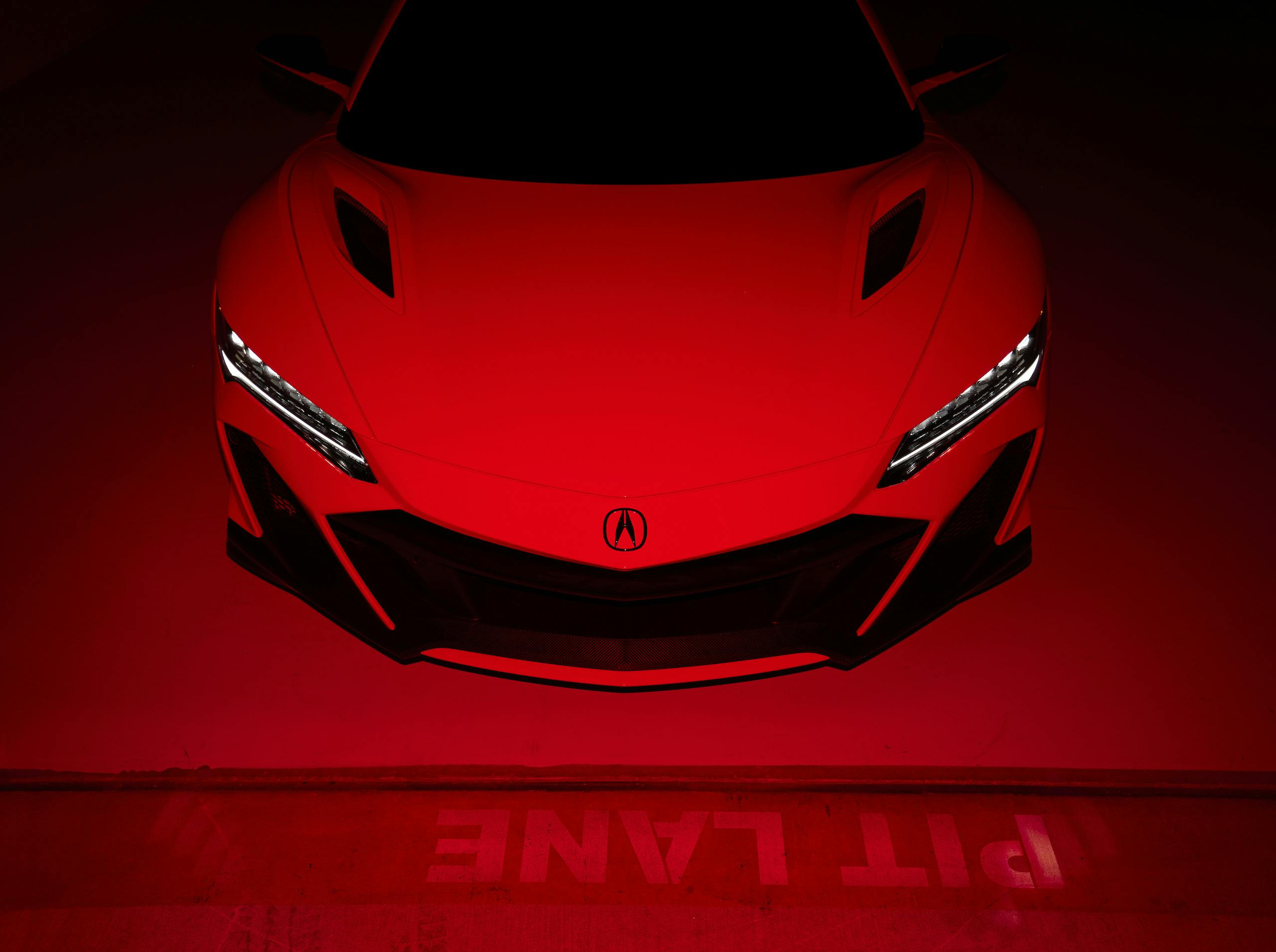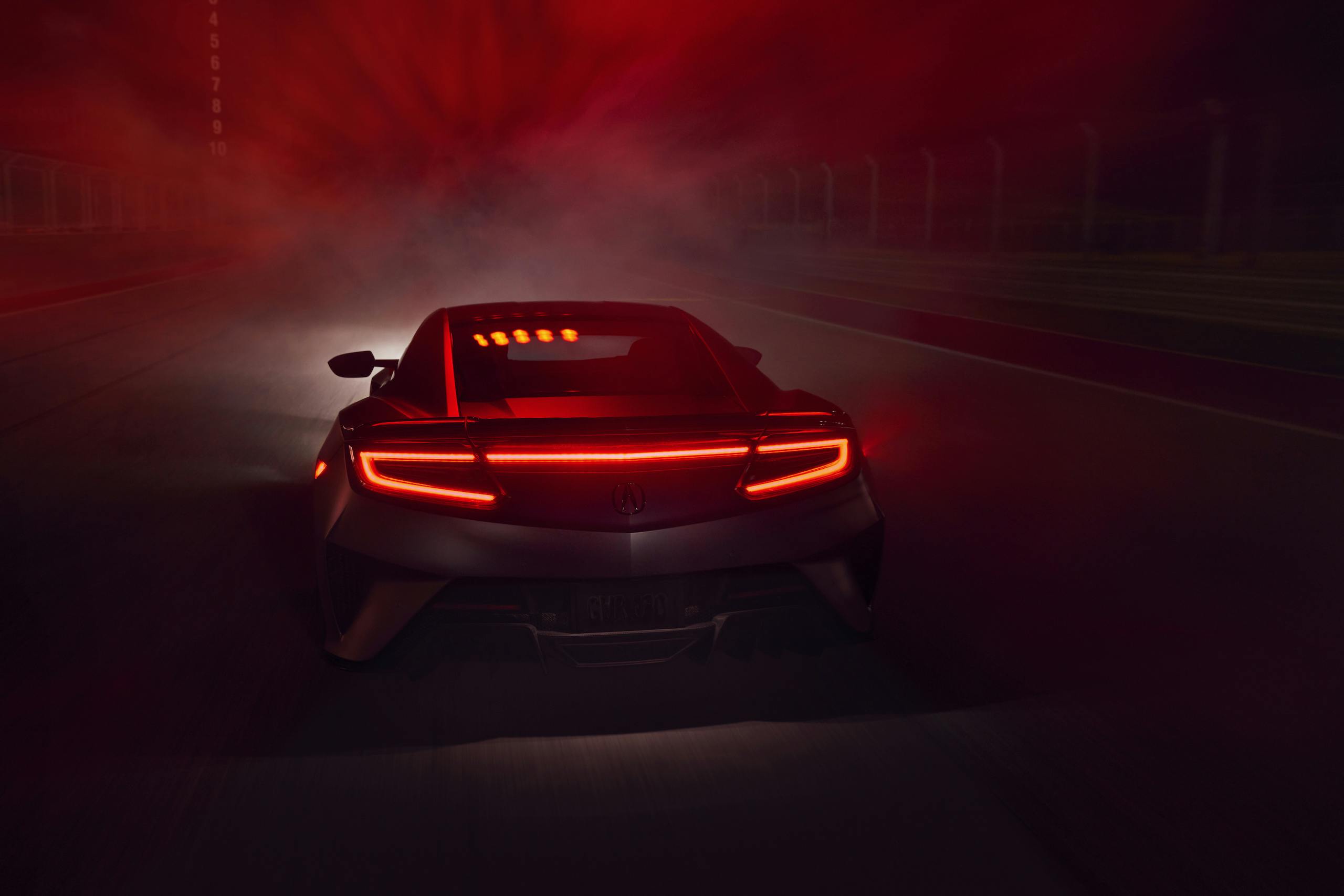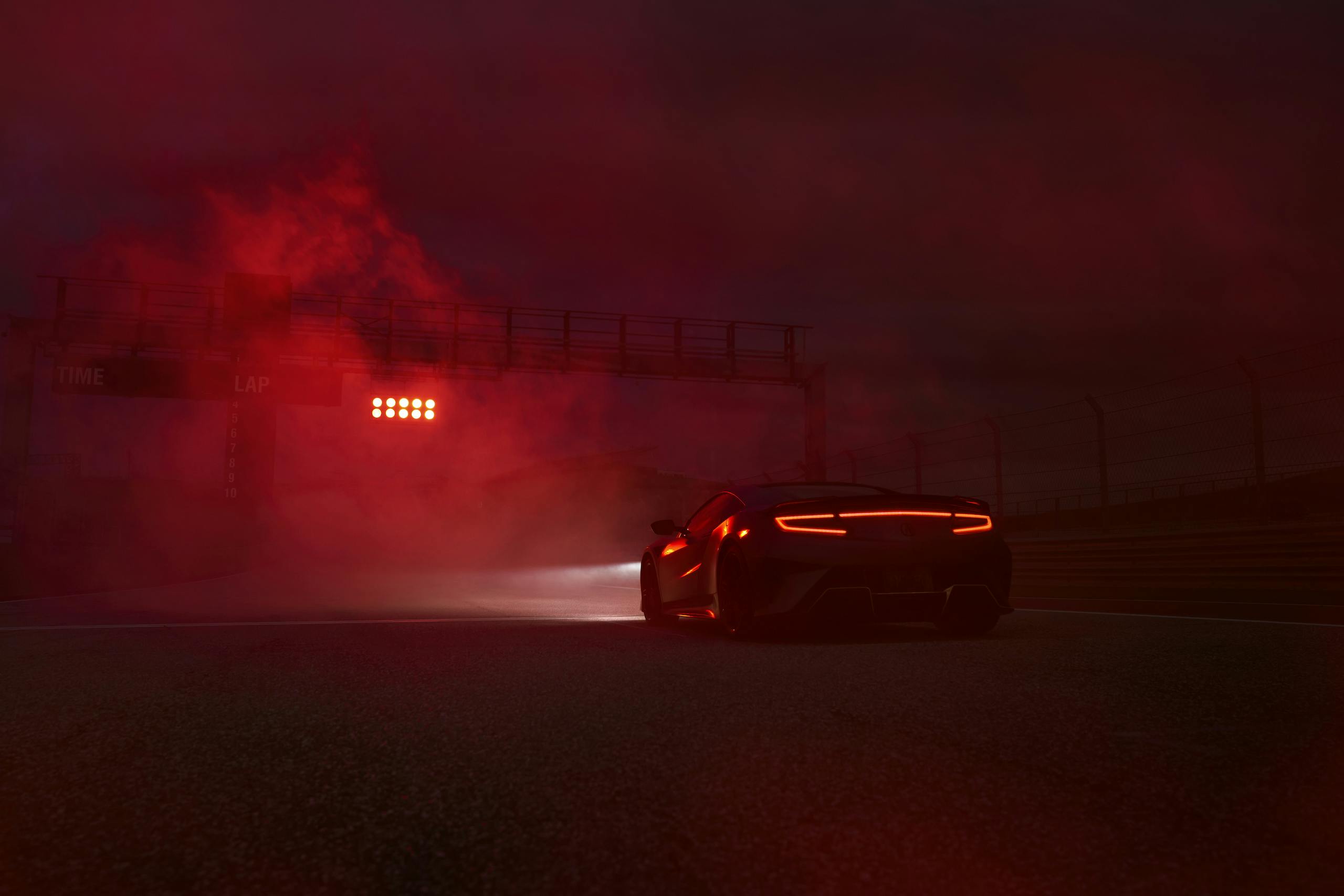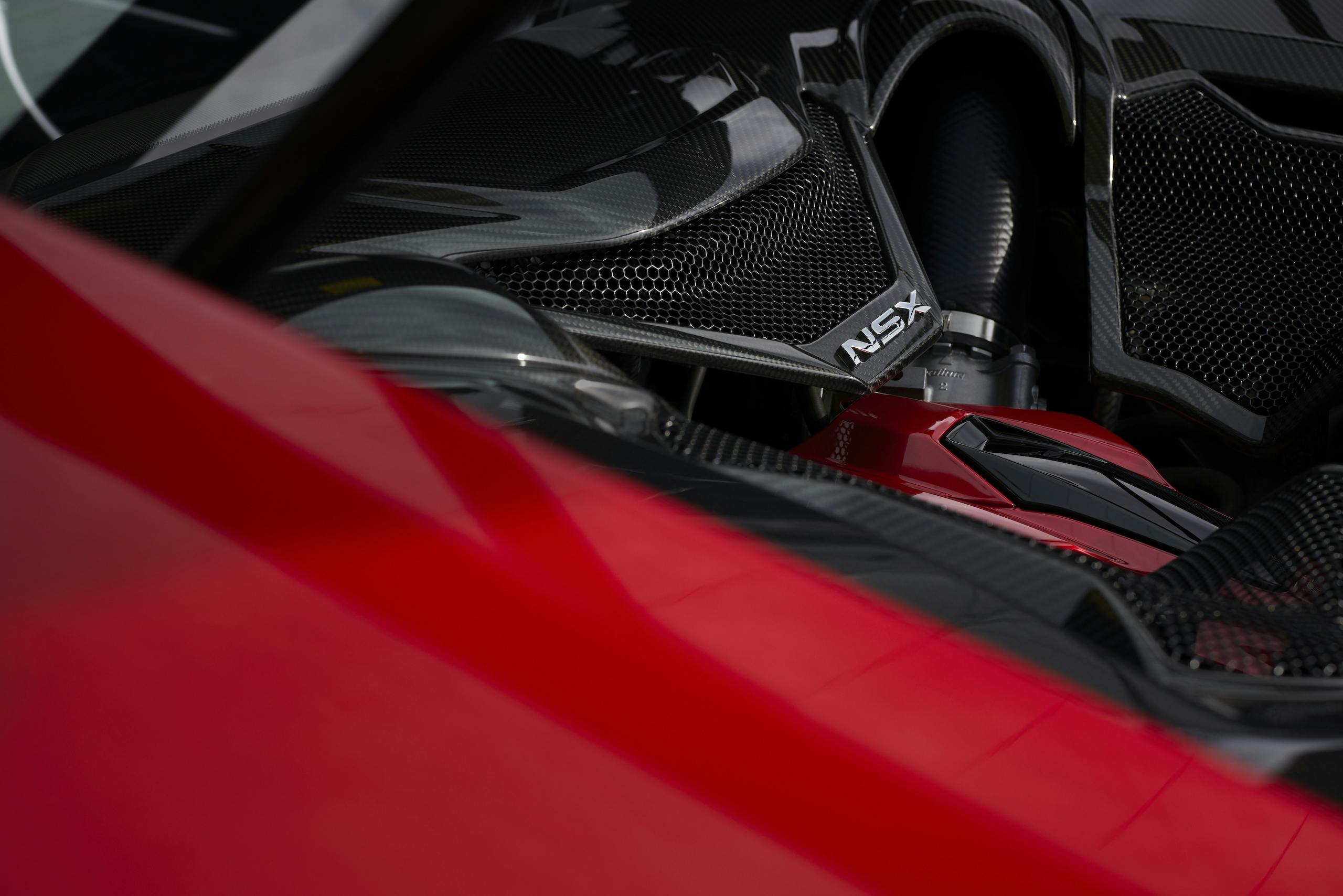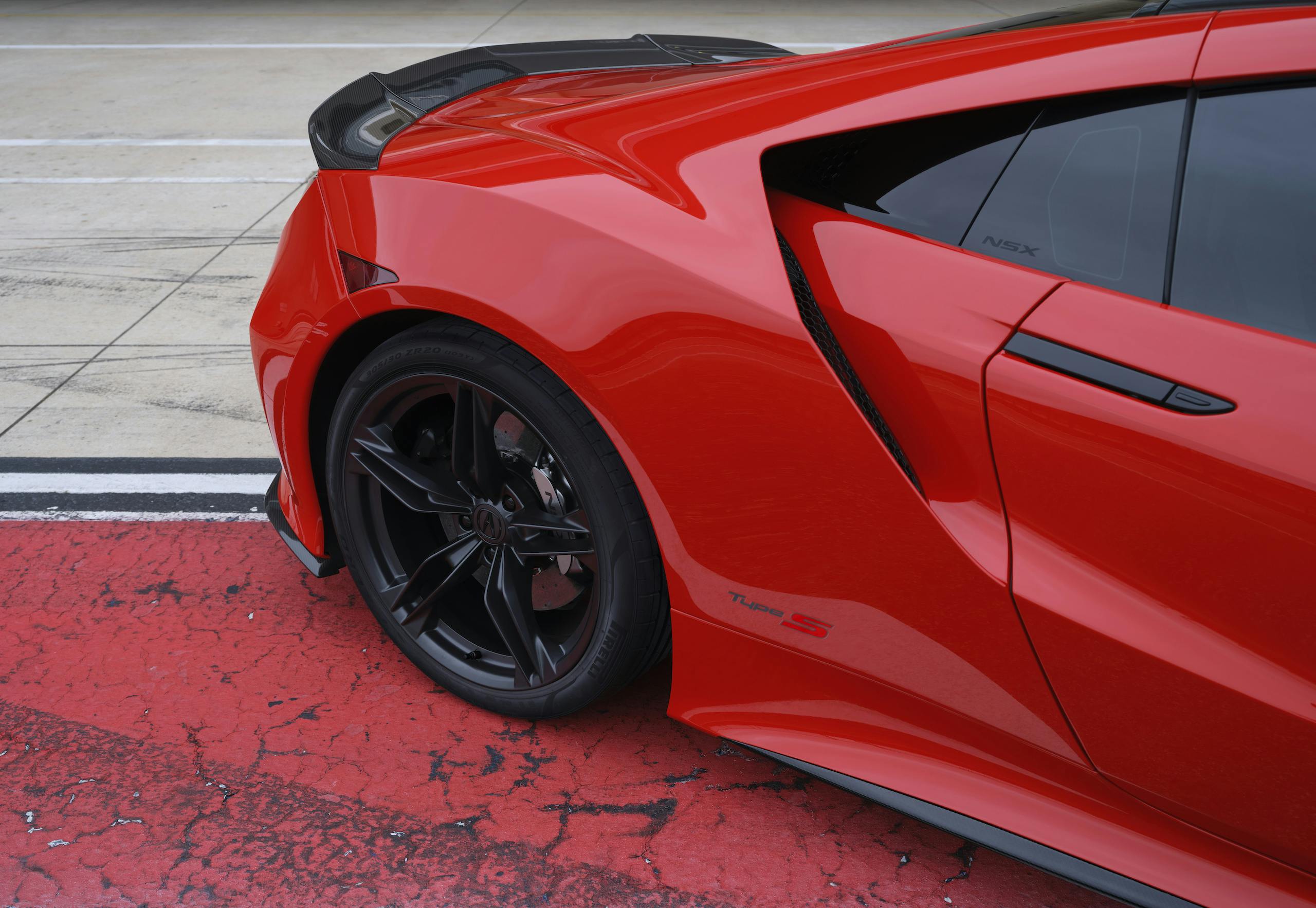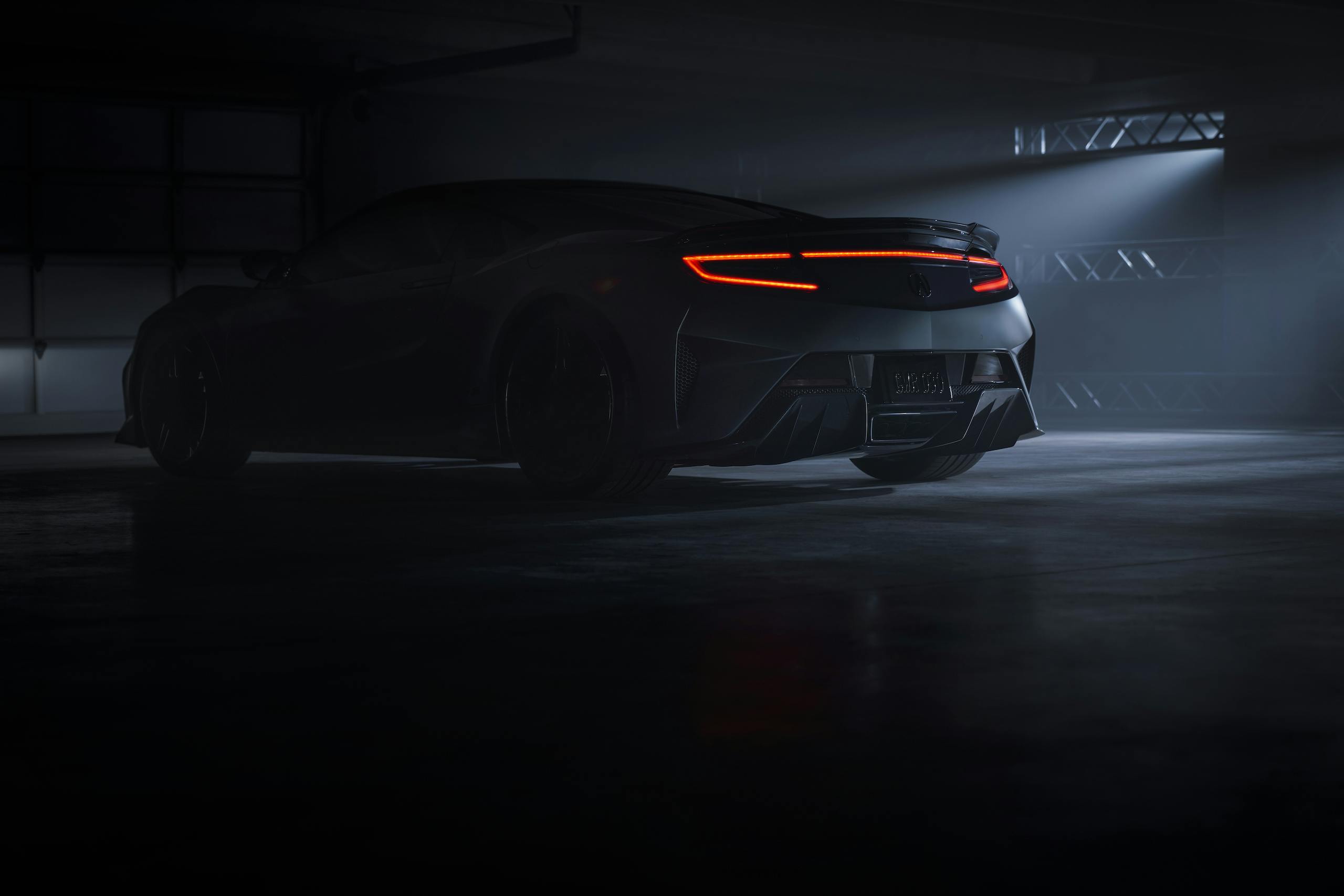Acura unveils limited-run NSX Type S at Monterey; price starts at $169.5K
If you’ve been holding your breath in anticipation of the newest iteration of the Acura NSX, exhale. Then get ready to lose your breath all over again.
Acura, in its 35th year as Honda’s performance brand, unveiled its lightning-quick 2022 Acura NSX Type S on Thursday evening during Monterey Car Week, showing off not only an enhanced version of the NSX’s twin-turbo hybrid 3.5-liter V-6 engine but also the model’s aggressive front and rear styling. The Type S has a base price of $169,500. A lightweight NSX Type S starts at $182,500.
“This is the most powerful, quickest, best-handling production NSX ever made,” Acura Assistant Vice President Emile Korkor said at the reveal. “… Truly the pinnacle of hand-crafted performance.”
In celebration of the final year of the second-generation NSX—the nameplate was reintroduced in 2015—the Type S will be limited to 350 units worldwide, with 300 of those sold to U.S. buyers. The Type S will join highly collectable NSX variants like the 1999 NSX Zanardi (51 produced) and JDM variants like the NSX-R (483 built from 1992–95), NSX Type S (209 from 1997–2001), and NSX Type S-Zero (30 from 1997–2001).
This is the first time the NSX Type S has been sold outside of Japan. The original, produced from 1997–2001, never made it to the U.S.

In a video released this spring in anticipation of adding the Type S badge to the TLX sport sedan and the upcoming MDX three-row SUV, Acura Vice President and Brand Officer Jon Ikeda explained, “When you create a Type S (Sport), the first thing you do is put it through the filter of ‘stop, go, and turn.’ Everything has to be better in all three of those, and you up the game. Does it get more horsepower? Does it get stiffer suspension? All of those things get put into play to make the car more sporty.”
It all begins with the engine. The NSX Type S is powered by an upgraded version of the supercar’s twin-turbo V-6, which is rated at 600 horsepower and 492 pound-feet of torgue, up from 573 / 476 in standard form. In addition to its internal combustion engine, the NSX powertrain also features three electric motors—two mounted on the axles up front and one in the rear—which combine to provide maximum performance through torque-vectoring all-wheel drive grip.

The gear ratio for the Twin Motor Unit (TMU) that powers the front wheels and provides active torque vectoring in corners has been lowered from 8:1 to 10:1. This 20 percent lower ratio increases off-the-line torque, giving NSX a powerful launch. (The standard NSX can accelerate from 0–60 mph in 2.7 seconds and has a top speed of 191 mph; the Type S promises to be slightly better.)
The performance V-6 has turbochargers like those in the NSX GT3 Evo race car, which won GTD class titles in the 2019 and 2020 IMSA WeatherTech SportsCar Championships. Other enhancements include a 6 percent increase in boost pressure, 20 percent greater battery capacity, and 10 percent higher battery output.
Power is routed through a nine-speed dual-clutch automatic transmission, which provides a 50 percent faster upshift response and new “Rapid Downshift Mode” for more aggressive automatic downshifting.
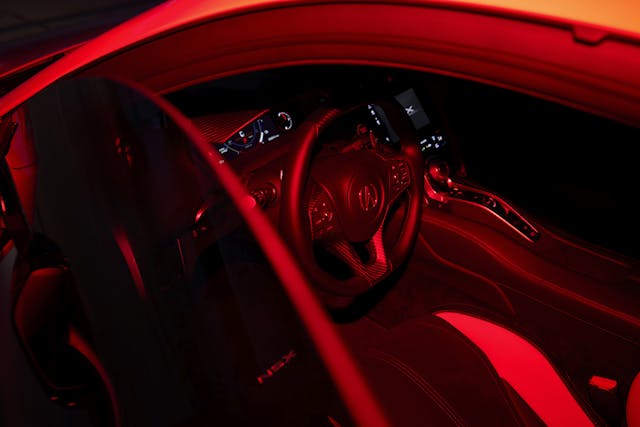
The NSX Type S offers four driving modes: Quiet Mode, in which the car can remain in its pure electric mode for extended periods; Sport Mode, which in addition to implementing the new Rapid Downshift function has been updated with new calibrations for the suspension dampers and AWD; Sport+ Mode, which has been reprogrammed to help the driver feel more integrated with the car (starting with earlier downshifting when the transmission is in fully automatic mode); and Track Mode, in which allowable downshift speed has been raised by 1500 rpm when downshifting into second through seventh gears, giving the driver more control over power delivery and keeping the engine in its most powerful rev range in circuit conditions.

Among the more noticeable changes is a new nose with larger, more angular air intakes working in tandem with the rear end’s NSX GT3-style diffuser for enhanced high-speed stability. The new shape of the car’s carbon fiber front spoiler minimizes front aerodynamic lift by directing air flow under the car.
A larger grille opening helps cool the more powerful engine by allowing more air to reach the radiators, while four additional openings—two on each side—route air to a sub-radiator behind each corner of the front bumper. The outermost air intakes also pass air through to the side of the car, working with redesigned front corners to create an air-curtain that reduces the wake and improves air flow to the side-mounted air intakes for the intercoolers.
Dark-tinted headlight and taillight lenses and a distinctive red engine cover further the aggressive appearance.

The NSX Type S also features a standard carbon fiber roof; new five-spoke wheels, which have a higher negative offset compared to the standard NSX; and stickier Pirelli P-Zero tires, which provide a 6 percent increase in lateral grip. And for an additional $6K, you can get new Gotham Gray matte paint (one of 10 color options), although the color will be capped at 70 cars. Inside, the Type S cockpit has an Alcantara headliner, embroidered Type S logo on the glove compartment, embossed NSX logo on the headrests, and contrast stitching.

For increased performance (and a more custom appearance), buyers can add the available Lightweight Package, which adds a high-gloss carbon fiber engine cover and carbon ceramic brakes, reducing total curb weight by nearly 58 pounds.
Orders for the new NSX Type S are now being accepted at www.Acura.com/NSX-Type-S. No matter how fast you are, however, you won’t get Serial #001/350—not unless you’re willing to pay up for it at Mecum’s Monterey Auction on Saturday. Proceeds go to charity.

Ikeda says the final edition of the NSX is bittersweet, both an ending and a beginning. “NSX is an incredible success story for Acura, leading the reestablishment of Acura as a performance brand and setting the stage for the return of Type S,” he says. Looking ahead, “we’re already investigating what the next generation of sports cars should be in the coming electrified era.”

